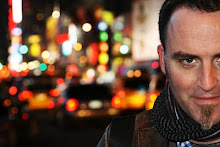Today Penny and I went to the open day at Tower Hamlets
Victorian cemetery. It’s quite astonishing how many forgotten green spaces
there are nestling in unexpected corners of London. The cemetery covers an enormous area which is almost completely overgrown. Scores of wild flowers poke up between the broken
graves.
A variety of little stalls had been set up between the
trees. Children were having their faces painted, people were selling plants and
demonstrating various traditional crafts like fence-making and stone-carving. A
group of old women dressed like Victorians were sitting behind a little
tombola stall, another group was selling delicious cakes. The event wasn’t hugely
well-attended, in fact it made me feel a little sad. When people go to a great
deal of effort to create something special, I think they deserve for it to be
successful, although perhaps the organisers were happy with the turn out.
We’d gone there to meet representatives from the Bethnal
Green Memorial Trust who are tirelessly attempting to raise funds to create a
monument to the people who died at Bethnal Green tube station on March 3rd
1943. It’s a tragic, little-known story, which was completely covered-up during the Second World War, because it was deemed to be so potentially demoralising for Londoners. In
short, a false air-raid siren sounded, which rather unfortunately coincided
with a decision by the military to test missiles in Victoria Park. People heard the bangs, panic
ensued, there was a stampede, a woman tripped on a staircase, and within a few seconds 173
people had been crushed to dead, many of them children.
We were taken to a quiet and particularly overgrown corner
of the cemetery to see some of the graves of the dead, all of which were tiny,
obviously because the majority of people who'd died in the disaster were so poor. The graves were
sinking into the undergrowth and the smell of wild garlic was
almost overwhelming. I stared at them, trying to comprehend what had happened, whilst attempting to work out
what some of the faded inscriptions said. I could only make out a couple of words on one of them; “death comes
in unexpected forms at unexpected hours.” For a few seconds the sound of birds singing in the
trees above me was deafening.
We were lucky enough to interview one of the survivors of
the incident who was overcome with emotion. He’d lost his father and
grandparents in the crush and today was the first time he’d seen their graves.
His father had been buried in the same coffin as one of their neighbours’
babies; one assumes because they couldn’t afford or didn’t want their child to
be buried alone. He cried a great deal as he talked to us; trying to remember
details, recalling going back to school on the Monday after the event to find half the seats in his classroom
empty. His mother, who was badly injured, never spoke about the
incident. I suspect this was one of the reasons why it still felt so raw for him. I don't think he'd ever been given a chance to grieve. He cleared away some of the undergrowth from around his father's grave and with great dignity placed a little pot plant at its foot, which he'd bought for a pound at one of the stalls. Heartbreaking.
As we returned to our car, which was parked underneath a gloomy-looking
railway arch, we found a lone red rose growing out of the ground; no bush –
almost as though someone had picked it and tried to replant it. I didn’t know
roses could grow without bushes and on stalks directly out of the ground, but it was as
beautiful and magical and sad and lonely as the cemetery which surrounded it.
350 years ago, Pepys had a chair delivered to his roof
terrace, which he took great delight in sitting on whilst staring out across
the city. It was obviously a lovely day, because he returned to the terrace
with his wife in the evening, saying how difficult it was to “settle to
business after so much leisure and pleasure.”




No comments:
Post a Comment
Note: only a member of this blog may post a comment.